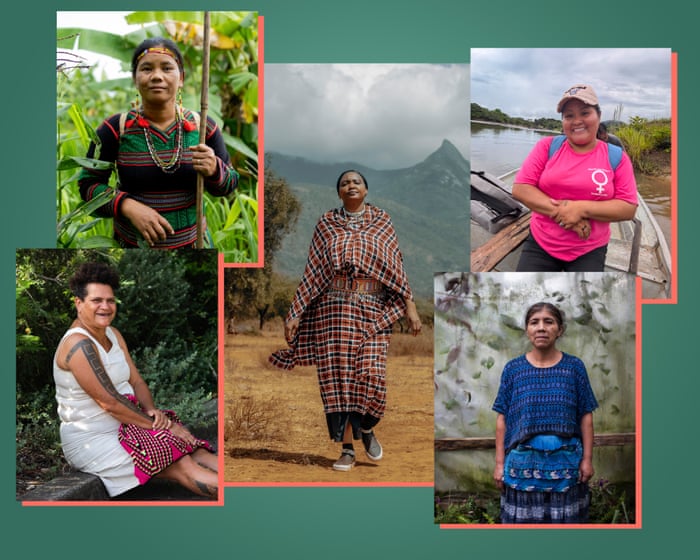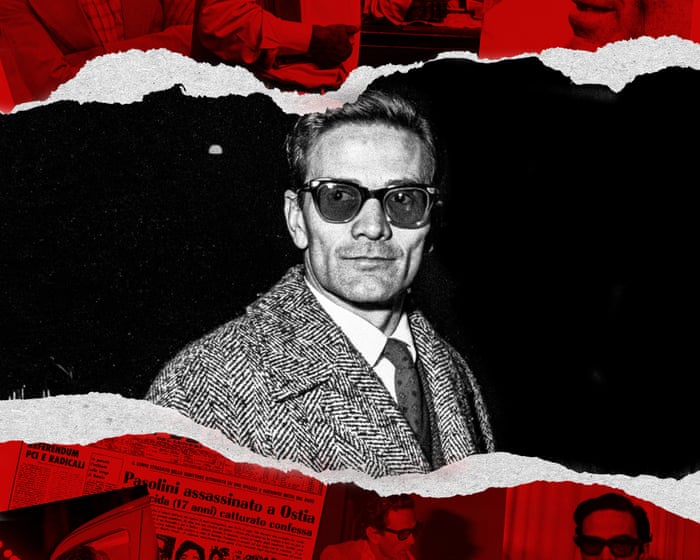We, the daughters of Mother Earth, have gathered to decide together how we can create a world where our children and grandchildren will want to live. This is the message of the Beijing Declaration of Indigenous Women.
Adopted in 1995, the declaration described the oppression faced by women worldwide and called on governments to recognize the social, cultural, economic, and religious rights of Indigenous peoples in their laws and constitutions.
Thirty years later, Indigenous communities still experience discrimination, threats, and barriers that restrict their access to education, healthcare, and opportunities to escape poverty. At the same time, the climate crisis, mining and logging industries, and criminal gangs have shrunk safe territories, ruined livelihoods, and caused food shortages.
Increasingly, women are at the forefront of resistance, serving as pillars of their communities. A report published this year for the 25th anniversary of the International Indigenous Women’s Forum (FIMI) highlights how women are central to protecting both culture and land.
Teresa Zapeta, FIMI’s executive director, says: “As we look ahead to the COP30 climate conference in the Amazon this November, the message is clear: the world must stop viewing Indigenous women as victims and recognize us as the strategic leaders we are.”
We spoke with five women leaders about their work and what inspires them.
Florence Jaukae Kamel, Papua New Guinea
Florence Jaukae Kamel, known as “Bilum Meri,” is from the Kama Nagamiufa clan of the Alekano ethnic group in Papua New Guinea. She was 17 when she had the first of her five children. In 2009, when her children were teenagers, she left their father after he punched her, breaking her tooth and leaving her bleeding on the ground.
When she told her brothers what happened, they urged her to go back. Kamel refused. With just eight kina (about £1.40) to her name, she rented a small hut in her village, Iufi-ufa. “I was jobless,” she recalls. “I survived by gardening, and I had endured so much abuse.”
Kamel was already known for breaking boundaries in fashion and politics. In 2002, she became the first woman elected to local government in Goroka province, where she turned heads by wearing dresses made from fabric traditionally used for bilum—woven bags that carry everything from food to babies. “People asked, ‘What is Florence doing?’ Some thought it went against our customs. But their criticism only motivated me. I wore those dresses every day—I had a whole wardrobe.”
In 2002, she started a women’s collective to weave bilum. By 2006, she was designing outfits for Papua New Guinea’s Commonwealth Games team and has since showcased her work in fashion shows and art galleries.
For Kamel, weaving is more than a source of income. “It’s a bond, it’s a heartbeat,” she says. “We share stories. We create laughter, joy, and the peace that women need.”
She launched an annual bilum festival that has grown into a network of 3,000 women. They exchange stories and techniques while receiving training in marketing, financial management, and adapting to climate change. The network also includes a safe house for survivors of domestic violence, with plans to open another.
“Most women here are unemployed, and weaving is their main skill,” says Kamel, now 53. “We help them preserve stories from their communities, and the training teaches them how to reach international markets.”
Thanks to the income, some women have bought sewing machines or land. “It’s made a huge impact,” Kamel notes. The group also records oral histories from elders and runs programs for girls—many of whom can now attend school because their mothers can afford the fees. “It makes me happy to see women earning their own money and making their own decisions,” she says.
Michelle Duff
Roeurn Heng, Cambodia
Roeurn Reoun Heng, a Bunong woman from Cambodia, is a member of the Indigenous Women’s Association.In 2019, Roeurn Heng discovered on Facebook that part of Phnom Radang—a mountain sacred to her community—had been sold to investors. Living in Mondulkiri province near Cambodia’s border with Vietnam, the elephant tour guide and farmer had watched more and more land being developed for tourism. “If the mountain disappears, it is like losing the identity of our entire Indigenous people,” she says.
Heng, 40, explains that during the Khmer Rouge genocide in the 1970s, people survived by hiding on the mountain. Today, residents of her Pou Lung village, home to the Bunong community, go there to pray for the sick and hold religious ceremonies.
When word spread that nearly four of the mountain’s ten hectares (24 acres) had been sold, Heng organized villagers to take action, filing complaints with provincial and ministry authorities. “I love nature,” she says. “When someone comes to destroy it, I’m heartbroken. I need to stand up and fight back.”
Growing up, Heng saw Bunong women trek from home to home selling fruits and vegetables, carrying goods—and sometimes children—on their backs. In 2011, she was a vocal advocate for women’s efforts to build a central market, and last year she helped lead renovations of the market and its stalls, including adding toilets for the women.
“It’s changed people’s lives because they can earn money for their families and have a proper place to sell—it’s easier,” Heng says. Women are now able to save for their children’s education and have built stronger friendships. But over the years, land grabs and deforestation have made it harder to forage or grow produce.
The fight over Phnom Radang continues. Provincial authorities proposed that buyers and villagers split the land equally—a suggestion the community rejected. Heng says Phnom Radang “is like a house with a door in the front and back. It cannot be divided.” In 2022, one of the buyers sued her for incitement, a common charge used against land activists in Cambodia. She was threatened with arrest, but her case has been in limbo since a hearing last October.
Neang Vannak, a provincial spokesperson, confirmed that a working group was investigating the dispute but declined to discuss Heng’s case. He said there were so many land conflicts in Mondulkiri province that it was “slow to resolve.”
Heng wants authorities to help communities register their land. “This is a matter of faith,” she says.
—
Immaculata Casimero, from the Wapichan people, has founded the Wapichan women’s movement and is involved in the struggle for land rights. When she spoke to the Guardian, she was preparing to meet Guyana’s president, Irfaan Ali, to discuss land rights.
The 42-year-old mother of four is an activist fighting for the rights of her Wapichan people—especially women—both on the ground and with authorities. “I’m the child of an Indigenous advocate, so I think it’s in my blood,” says Casimero. After more than a decade living outside her community for work, she returned in 2015 and was elected councillor of Aishaltan village. This led her to work with the South Rupununi District Council (SRDC), which represents the Wapichan people.
An estimated 10,000 Wapichan people live in Guyana’s southwest, on the border with Brazil. They have been fighting for full legal recognition and protection of their ancestral lands since Guyana gained independence from Britain in 1966.
“It’s 1.6 million hectares [4 million acres] of pristine forest, which we Wapichan people have defended for generations. We have tried to keep out extractive industries, but we have not always been able to,” says Casimero.
She is involved in several initiatives to protect Wapichan territory and safeguard cultural heritage, including—Their language. These efforts include a project to establish a university and bilingual schools where students learn both Wapishana and English.
“Our language is our identity,” says Casimero. “It connects us to our land, our food, our culture, our rivers, our mountains, our water.”
Much of her work is with the Wapichan wizii women’s movement, which she co-founded five years ago. Casimero visits villages to meet with women and share information about rights, financial management, and the environment.
“Women bear a greater burden from climate change, especially when it comes to our traditional food systems,” she explains. Unusual floods and longer dry seasons harm cassava crops, leading to food shortages and a loss of cultural practices, particularly among the younger generation.
“Nutrition, health, and the environment are all connected,” says Casimero. “When you rely on outside food sources, it changes the culture.”
Constance Malleret
María Cahuec, Guatemala
“If we women don’t work, there is no progress,” says María Cahuec, a Maya Poqomchi’ elder from Guatemala’s central highlands. “I’m a grandmother, but I’m still working.”
Cahuec, 63, lives in Mocohán, a village of about 5,000 people in the department of Baja Verapaz, where she farms and weaves huipiles, the traditional blouses worn by Maya women.
Baja Verapaz is one of Guatemala’s poorest regions—more than 80% of the population lives below the poverty line—and it still bears the scars of the brutal 36-year civil war that ended in 1996. Indigenous communities continue to fight for full ownership of their land.
“We have no legal certainty,” says Cahuec. Women lead the struggle for land rights because “men often leave to find work elsewhere,” she adds.
Cahuec is a community representative and previously worked as a school counselor and president of Ixoq Mayaj, an organization that supports women in achieving financial independence and farming.
Along with maize and beans, they grow vegetables like chard, onions, and beetroot using organic methods. Cahuec leads the vegetable growers, though they’ve paused planting for now. “The soil loses its fertility, so we’re letting it rest,” she explains.
These days, she prefers weaving to farming, as it’s less physically demanding. With nine children and 14 grandchildren, she is passing her skills to the next generation. “This work will not end,” she says.
Selling handwoven textiles is the main source of income for women in Mocohán, though they struggle to get fair prices for their work.
Meanwhile, she continues to organize with other women. A group of them is planning a protest outside one of the farms that is encroaching on their land.
“We are going to defend our territory,” she says. “Women are the true owners of the land.”
Constance Malleret
Ndinini Kimesera Sikar, Tanzania
Ndinini Kimesera Sikar grew up in the forests of northern Tanzania. Her childhood was idyllic, filled with love from f…Her love for family and nature was second only to the Maasai tradition that expected her to marry at 13. But Sikar, one of more than 30 children from her father’s five wives, was sent to school in Dar es Salaam. There, teachers recognized her potential and encouraged her to continue to secondary school. “That’s when the challenge began,” she says.
At 15, her family arranged for her to marry a Maasai man “with many cows.” She refused. They found another man, and another, but each time Sikar said no.
Determined to continue her education, she enlisted a teacher and an uncle to persuade community leaders. Her father had the final say. “When I told him what I wanted, he listened. He agreed I could go, if I promised to return and help the community.”
“By the time I left, everyone was unhappy, but my father was at peace,” Sikar recalls.
She became the first in her community to attend university and the first to work in a bank. “I rose to a high level. I became head of human resources,” she says.
But her promise to her father stayed with her. When he died in 2000, she quit her job and founded the Maasai Women Development Organization (MWEDO).
“Maasai women and girls had so few opportunities in education, economic rights, and health. They had no rights and no way out,” says Sikar.
What began with Sikar and two other volunteers in 2000 has grown into an organization of 10,000 women. They meet weekly in over 500 groups, benefiting more than 360,000 households and helping them secure land rights.
They built a health clinic in Kiteto district, where 800 babies are born each year, and funded a school in Arusha that protects 1,200 girls from early marriage. So far, 55 girls from the school have graduated from university.
“Some went to university, some became teachers or nurses and returned to their communities. About six now work with MWEDO,” Sikar says.
MWEDO aims to blend the best of Maasai life with a changing world. “Maasai are livestock keepers; they depend on that for survival. We know every tree, every fruit—the Indigenous knowledge to live.”
The climate crisis is making life harder, and MWEDO encourages communities to diversify. “Sometimes there is drought—no milk, no food—so we train women to understand climate change and create other sources of income, like growing vegetables or raising goats and chickens.”
Sikar now lives in the city. “Where I was raised was completely within my community, so it’s part of who I am. The way we eat, dress—that’s when I feel most myself. I’m most at peace.”
Isabel Choat
Frequently Asked Questions
Of course Here is a list of FAQs about the topic Not just resisting but leading the fight five women who refuse to be ignored designed to sound natural and provide clear direct answers
General Beginner Questions
Q What is this topic about
A Its about highlighting five specific women who are not just protesting against injustice but are actively leading movements and creating change in their communities and the world
Q Who are these five women
A The specific five would depend on the article or talk but they are typically contemporary activists organizers or leaders from around the world who are tackling major issues like climate change racial justice gender equality or political corruption
Q Why is it important to focus on women leaders
A Womens leadership especially from marginalized groups has often been historically overlooked Showcasing these stories provides crucial role models diversifies our understanding of leadership and highlights unique effective approaches to activism
Q What does refuse to be ignored mean
A It means these women persist in their work despite facing opposition silencing or indifference They use their voices and actions so powerfully that the world must eventually listen and respond
Deeper Advanced Questions
Q How is leading the fight different from just resisting
A Resisting is saying no to a problem Leading is about proactively building a solution It involves strategy organizing communities creating new systems and inspiring others to join a positive vision for the future
Q What are some common strategies these women use to lead effectively
A Common strategies include grassroots organizing leveraging social media for awareness engaging in strategic litigation creating educational resources and building diverse coalitions across different movements
Q What kind of challenges do these women typically face
A They often face significant challenges like online harassment physical threats legal battles burnout from emotional labor and having their expertise or authority questioned more than their male counterparts
Q Can you give an example of a tangible outcome achieved by a woman leader like this
A Sure For example a climate activist might lead a campaign that successfully pressures a major government to pass landmark environmental legislation A racial justice organizer might get a city to reinvest police funds into community programs
Practical ActionOriented Questions




